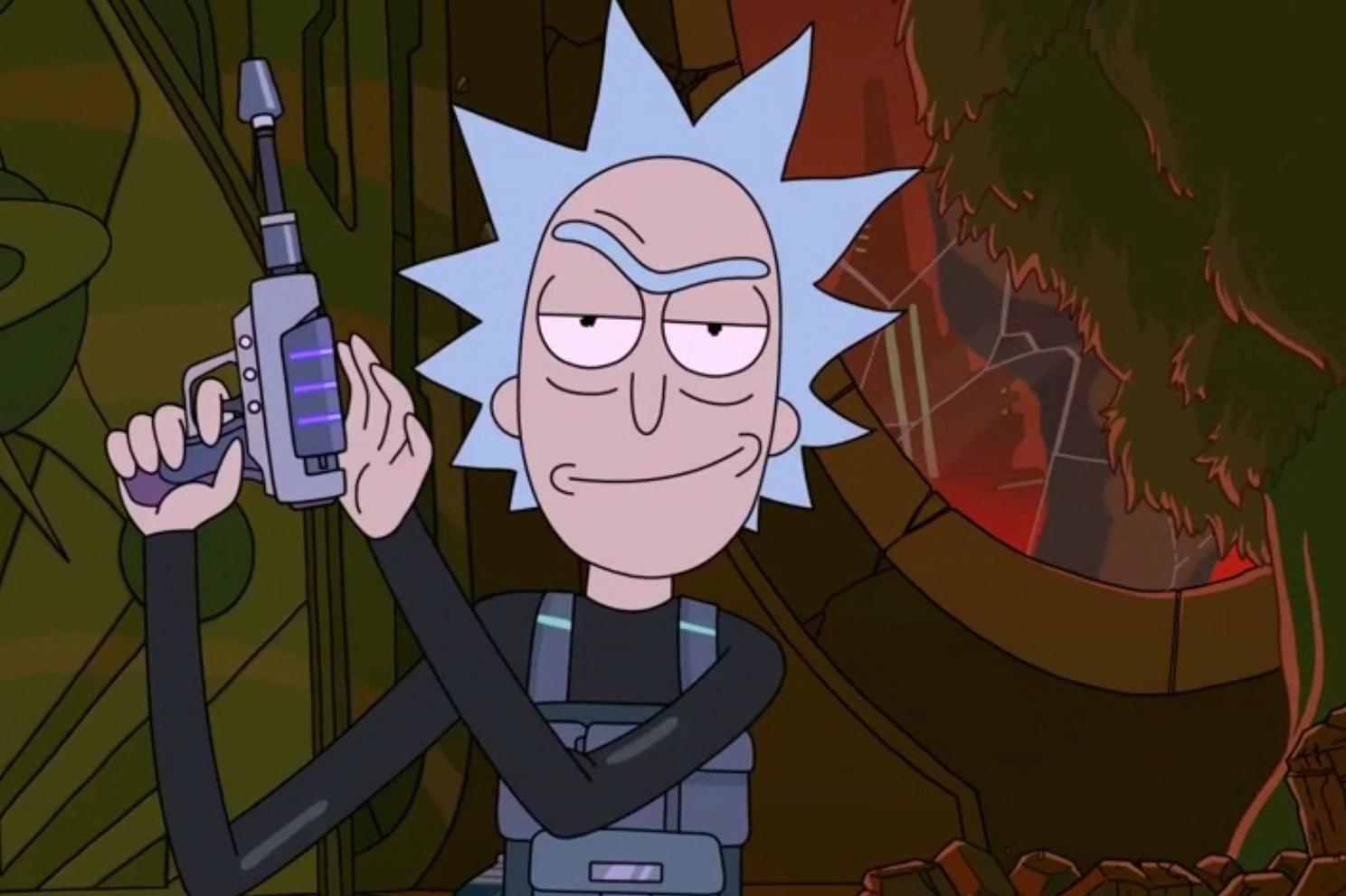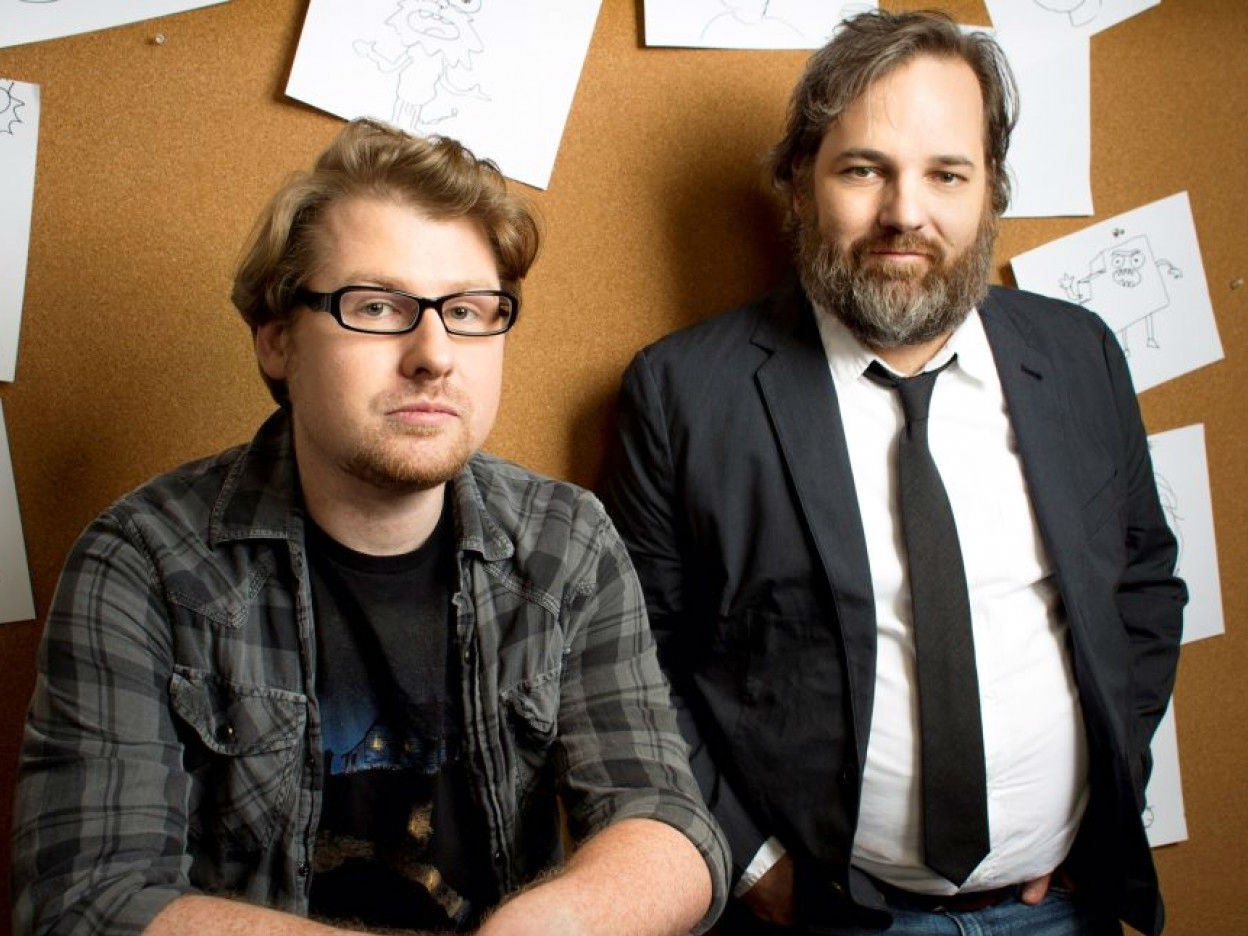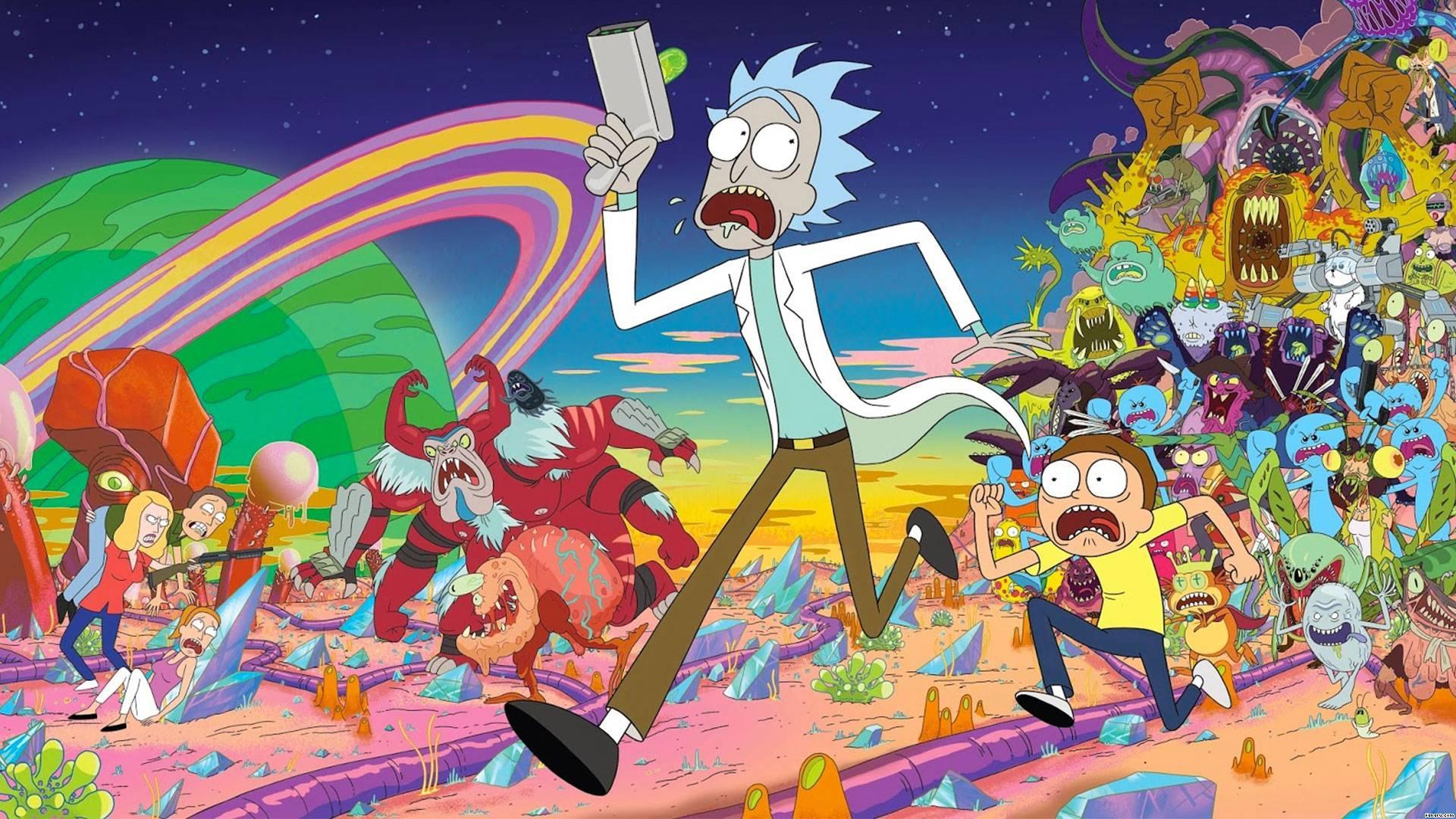Rick and Morty creators reveal the long road to season 3
Dan Harmon and Justin Roiland on how pressure can ensnare you in ‘the vortex of not-good-enough’ - and how they finally escaped it

Your support helps us to tell the story
This election is still a dead heat, according to most polls. In a fight with such wafer-thin margins, we need reporters on the ground talking to the people Trump and Harris are courting. Your support allows us to keep sending journalists to the story.
The Independent is trusted by 27 million Americans from across the entire political spectrum every month. Unlike many other quality news outlets, we choose not to lock you out of our reporting and analysis with paywalls. But quality journalism must still be paid for.
Help us keep bring these critical stories to light. Your support makes all the difference.
The question had hung over Adult Swim’s animated smash Rick and Morty for so long that when the show’s creators took San Diego’s Comic-Con International stage, any answer was spoken in the tone of implied half-apology.
Fans had lined up for hours to see creators Dan Harmon and Justin Roiland, but that was nothing next to the two years it had been since Season 2 of Rick and Morty debuted. So ahead of this week’s full return into Season 3 (after a surprise episode on April Fools’ Day), the immediate query that met the seated talent was: what took so long to get a Season 3?
“Because we respect you guys so much,” Roiland tossed out to the Comic-Con throng as a partial answer, like a Szechuan-spiced meat scrap to pacify the lions.
“We’re afraid of letting you down,” Harmon chimed in. “There’s a lot of you – you’re kind of scary.”

Harmon was addressing the convention-centre attendees, but that “you” also spoke to the show’s large fan base (April’s surprise season premiere drew more than 1.6 million viewers for twin airings on a single night, according to the Nielsen numbers).
During this Con panel – which also featured writer-producer-actor Ryan Ridley and voice actors Sarah Chalke and Spencer Grammer – the moderator jokingly asked the creators about the perils of making content-famished fans wait so long. “It’s a syndrome, isn’t it?” Harmon replied. “You start making them wait, and then you’re like, ‘They’re going to kill me. I should make this really good. How do I do that? By taking longer.’”
The line got a laugh, but that insight also offers a true peek into how Harmon and Roiland’s style of collaboration was required to get Season 3 into gear. Although Harmon (Community) and Roiland (Fish Hooks) are veterans of creating series comedy under deadlines, there was something about a third season of Rick and Morty that spun them into what Roiland calls the “vortex of not-good-enough”.
Their perfectionism was a direct response to the passion they’ve stoked with a show about Rick Sanchez (voiced by Roiland), a boozing, dimension-hopping scientific genius who’s so reckless that he doesn’t observe the normal gravitational pull of morality; his perpetually nervous grandson Morty (also Roiland), who asks the quavery questions that heighten the comedy of philosophical conflict; and the rest of the family that’s along for the trippy ride.
Listening to Harmon and Roiland talk off-stage, you can hear how they complement each other so brilliantly. Harmon sometimes speaks in concentric circles – these intriguing little rhetorical mazes that double back on themselves. It is as if his mind is hungry to explore infinite options, yet he is always centred by his own carefully diagrammable logic.

Watch Apple TV+ free for 7 days
New subscribers only. £8.99/mo. after free trial. Plan auto-renews until cancelled

Watch Apple TV+ free for 7 days
New subscribers only. £8.99/mo. after free trial. Plan auto-renews until cancelled
Roiland, by contrast, is highly visually oriented and tends to speak in lateral bursts – approaching both art and the art of conversation with a kinetic, energetic freedom. “I’m just insane,” Roiland tells me. “So what usually drives me is pure joy for something stupid.
“I’m also very visual,” he continues. “I’ll have an idea in my head that I really can’t shake.”
A specific example of that, which is teased in the Season 3 preview, he says, involves a story in which Summer (Grammer) literally becomes as big as a house. “That image was burned into my brain in connection to the story that we had broken,” Roiland says. “And we were sitting around wondering, ‘Can we beat Summer getting big?’ We spent a good hour or two pitching all kinds of ideas – what Summer could be changed into. I kept pitching the same thing – I’m just so stuck on it. After a while, Harmon finally was like, ‘All right, fine.’”

Roiland’s visual sense helps unmoor Harmon from his cleaving tightly to verbal perfection. Words, to him, are the essential architecture.
“From my end of it, it was just not understanding that scripts are not blueprints,” Harmon says of his evolution as a writer. “I used to think of scripts as blueprints – meaning that if you stick to them perfectly, the building will work. And if you divert from them, the building will be faulty.”
So can the story-builder over-rely on the blueprints, then?
“Yes, you can overemphasize the emphasis of story points,” Harmon says. “I’m at a stage of writing now where I’m trying to get away from that. I’m trying to do more of what Justin does – he has a better gift for going lateral.”
For Harmon, “there’s too much neurological habit there with story structure,” he says. “At this point, you have that baked in your brain as a rut.”
Part of that rut involved the approach he himself had cooked up. About six years ago, while still working on his NBC sitcom Community, Harmon began to share his codified process for story structure, an eight-step narrative algorithm that, in part, relied on Joseph Campbell’s circular monomyth – the hero’s journey as geometry.
Now, Harmon preaches a certain freedom from such exactitude. “It’s a guide for the same reason that we have to take swim classes even though we’re mammals,” he says. “The monomyth is a swim lesson. It’s just saying, ‘Look, you’re going to be dealing with stories all the time. Try to understand what a story is.’ What makes a story different from a phone book, a music video, a fart, a song. The monomyth is like a compass. If you’re lost in the woods, knowing which way is north is definitely better than not knowing, but it doesn’t mean you need to walk north to get where you’re going.”
Harmon refers to movement, too, when he describes how he felt increasing pressure after the audience embraced Season 2. “It’s like this weird tailspin that can happen where you know you’re not supposed to worry about not worrying, not worrying, not worrying about something,” says Harmon, again painting in circles. “And it can kind of vortex forever.
“If we didn’t have a deadline – which we very badly missed – it’s as simple and unremarkable as if you’re tired of being stuck in mud,” continues Harmon, shifting metaphors. “The faster the wheels spin, the more stuck you get. It’s a really boring reason for something so dramatic to happen. The only way out of it is – it just happened. It’s the happening to you that makes you realise, ‘Did I not see the universe the right way?’ You only gain that perspective by making that mistake.”
Harmon and Roiland say they learned from this latest delay. How best to explain it? Again, Harmon steers into the metaphor of navigating a vehicle – as if young Morty were at the wheel.
“Both Justin and I were like, ‘Wait, this is it – we have what we can call a television show here. We can screw it up if we do it wrong.’ Then your next realisation is, ‘Uh-oh, that seems like a dangerous way to start thinking. That could be really bad. So let’s stop thinking,’” Harmon says.
“How do you stop thinking? Rule No 1: there are no rules. Rule No 2: then you kind of lose your mind. Rule No 3. No matter how great you are, it’s like a kid driving a car – you do a horrible job parallel parking, you hit a fire hydrant. We kind of did that for Season 3 and it made us real late.”
So how do they see it now, reflecting through the rearview mirror upon that creative process?
“Looking back, it’s like: wow, that took three times longer than it needed to, given the final result,” Harmon says. “You go, ‘Now I’ve got it.’”
Rick and Morty Season 3 is available now on Netflix
© The Washington Post
Join our commenting forum
Join thought-provoking conversations, follow other Independent readers and see their replies
Comments